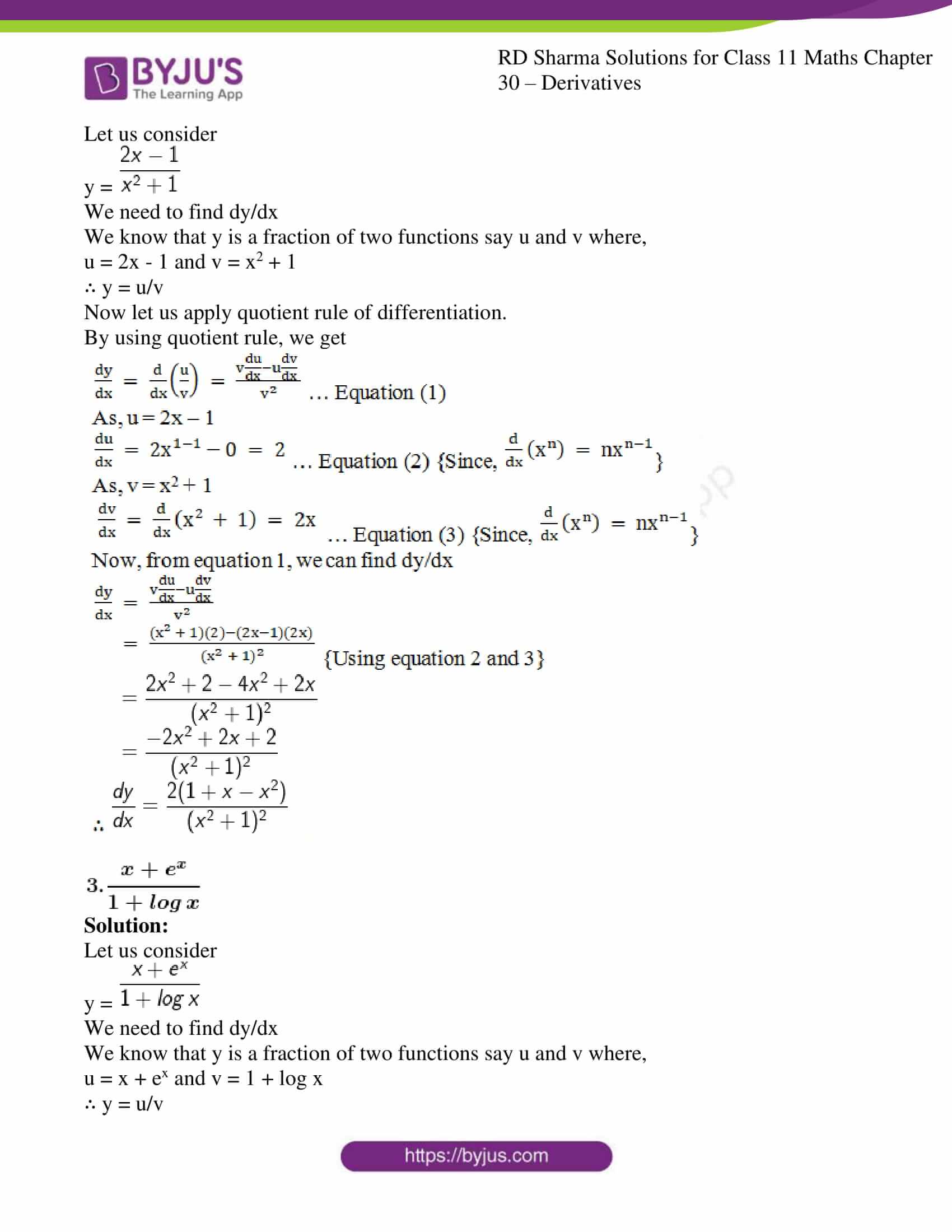This exercise deals with fundamental rules for differentiation which are based on the quotient rule for differentiation. Students can practice the problems on a regular basis and clear their doubts pertaining to the subject by referring to the solutions. The solutions are designed strictly according to the current syllabus and the marks weightage in the annual exam. Students can boost their confidence level by solving tricky problems with the help of solutions. RD Sharma Class 11 Maths Solutions PDF is available here, students can download the same from the links provided below.
RD Sharma Solutions for Class 11 Maths Exercise 30.5 Chapter 30 – Derivatives
Also, access other exercises of RD Sharma Solutions for Class 11 Maths Chapter 30 – Derivatives
Access answers to RD Sharma Solutions for Class 11 Maths Exercise 30.5 Chapter 30 – Derivatives
EXERCISE 30.5 PAGE NO: 30.44
Differentiate the following functions with respect to x:

Solution:
Let us consider
y =

We need to find dy/dx
We know that y is a fraction of two functions, say u and v, where,
u = x2 + 1 and v = x + 1
∴ y = u/v
Now let us apply the quotient rule of differentiation.
By using the quotient rule, we get


Solution:
Let us consider
y =

We need to find dy/dx
We know that y is a fraction of two functions, say u and v, where,
u = 2x – 1 and v = x2 + 1
∴ y = u/v
Now let us apply the quotient rule of differentiation.
By using the quotient rule, we get


Solution:
Let us consider
y =

We need to find dy/dx
We know that y is a fraction of two functions, say u and v, where,
u = x + ex and v = 1 + log x
∴ y = u/v
Now let us apply the quotient rule of differentiation.
By using the quotient rule, we get



Solution:
Let us consider
y =

We need to find dy/dx
We know that y is a fraction of two functions, say u and v, where,
u = ex – tan x and v = cot x – xn
∴ y = u/v
Now let us apply the quotient rule of differentiation.
By using the quotient rule, we get


Solution:
Let us consider
y =

We need to find dy/dx
We know that y is a fraction of two functions, say u and v where,
u = ax2 + bx + c and v = px2 + qx + r
∴ y = u/v
Now let us apply the quotient rule of differentiation.
By using the quotient rule, we get






Comments